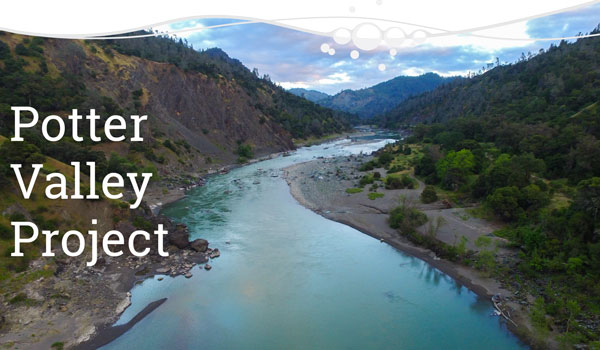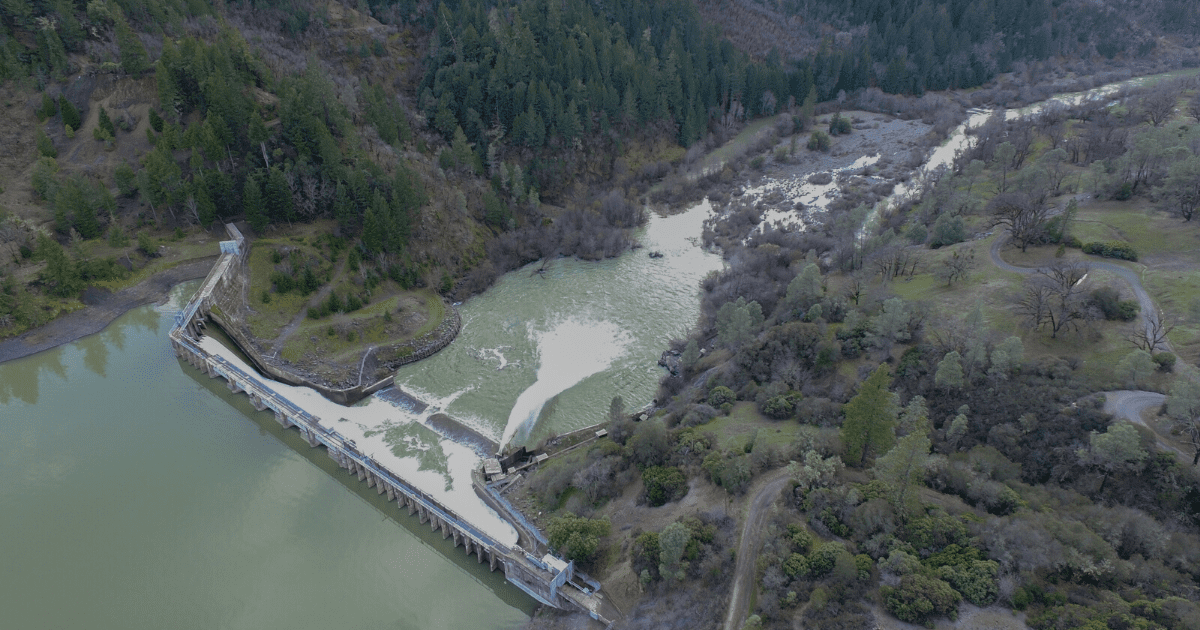A Path Forward for the Potter Valley Project

California Trout, Mendocino County Inland Water & Power Commission, and Sonoma Water announced today that they have entered into a planning agreement to explore pathways to relicense the Potter Valley Project (Project) in the wake of PG&E’s decision to withdraw from the FERC relicensing process for the Project. The planning agreement aims to achieve a “Two-Basin Solution” that benefits water users and fish and wildlife in both the Russian River basin and the Eel River basin.
The Eel River is a high priority watershed for California Trout. “We are committed to finding a solution for the PG&E-owned Potter Valley Project that meets the needs of fish, water and people,” said California Trout Executive Director Curtis Knight.
PG&E’s FERC license for the Potter Valley Project will expire in 2022. PG&E’s withdrawal from the relicensing process and its subsequent declaration of bankruptcy have provided an opportunity for CalTrout and local partners to work proactively to find solutions that improve the health of the Eel River watershed while respecting the needs of the many water users who currently depend on Eel River water.
The planning agreement between CalTrout, Sonoma Water and the Inland Water & Power Commission was prompted by Congressman Huffman’s “Ad Hoc Committee” process, which convened over twenty-five public, private, and governmental entities seeking to identify a solution that met water needs in both the Eel River and Russian River basins, known as the ‘Two-Basin Solution’” for the Potter Valley Project relicensing effort.
The three initial parties to the planning agreement have taken the initiative to push forward an affirmative solution in response to the compressed FERC timeline created by PG&E’s recent withdrawal from the relicensing process. The partners plan to move forward in a collaborative and transparent manner, while being inclusive of other stakeholders.
The process will build on significant work completed to date by members of the Ad Hoc Committee regarding fish passage above Scott Dam and water supply for both Eel and Russian River basins.
The planning agreement contains a set of principles ensuring that any proposal for relicensing the PVP will advance the mutual goals of the Two-Basin Solution, including: (i) restoration of viable, anadromous fisheries in both river basins, including the analysis of dam removal on the Eel River, (ii) continued water supply reliability that will meet the needs of consumptive water users in both basins, and (iii) hydroelectric generation (among other goals). All solutions will need to be based on the best available science and engineering.
“While CalTrout has taken this initial step forward with Sonoma Water and Mendocino County Inland Water & Power Commission to commit to finding a Two-Basin solution, we look forward to working with all stakeholders to solve this complex resource issue,” added Knight.





